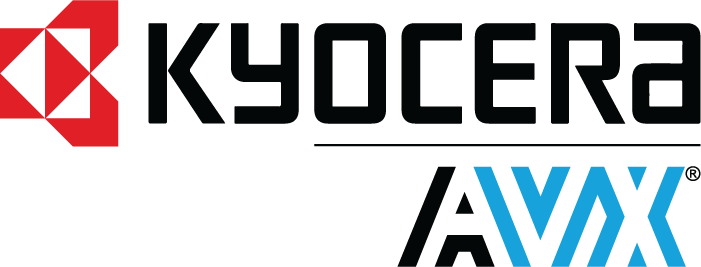
KYOCERA AVX
KYOCERA AVX is a leading manufacturer of electronic components, specializing in ceramic capacitors, connectors, and filters. With a history dating back to 1972, KYOCERA AVX has become a trusted name in the electronics industry, known for their high-performance products and exceptional customer service. The company's product portfolio includes a wide range of passive electronic components designed to meet the specific needs of various industries, including automotive, aerospace, and telecommunications. KYOCERA AVX's state-of-the-art facilities, advanced technologies, and skilled workforce enable them to deliver customized solutions with exceptional accuracy and reliability. The company is committed to sustainability, using eco-friendly materials and production methods to minimize their impact on the environment. Through continuous innovation and a customer-centric approach, KYOCERA AVX continues to drive progress in the field of electronic components, providing cutting-edge products designed to meet the evolving needs of modern industries.
RF Mixers
Results:
Results remaining:0
Applied Filters:
KYOCERA AVX
No data |
About RF Mixers
RF mixers, also known as frequency mixers, are essential components used in various RF (Radio Frequency) applications to alter the frequency of two input signals. These devices typically feature three ports and can be either passive or active. The primary purpose of an RF mixer is to downconvert or upconvert signals. Downconversion involves shifting the frequency of the input signals to a lower frequency range, while upconversion involves shifting the frequency to a higher range. This frequency conversion enables further processing, modulation, demodulation, or transmission of the signals. RF mixers possess different characteristics that define their performance and suitability for specific applications. Some of these characteristics include: RF Type: RF mixers can be categorized based on the frequency range they operate in, such as L-band, S-band, C-band, X-band, Ku-band, or Ka-band mixers. Frequency Range: The frequency range of RF mixers determines the upper limit at which they can operate effectively, typically ranging from 0 to 90 GHz. Number of Mixers: RF mixers can have one, two, three, or four mixing elements, allowing for different levels of frequency conversion and signal processing capabilities. Gain: The gain of an RF mixer refers to the amplification of the output signal compared to the input signal. Higher gain results in increased output power. Noise Figure: The noise figure indicates the amount of additional noise introduced by the mixer during signal processing. A lower noise figure signifies better performance. Secondary Attributes: Additional attributes of RF mixers may include linearity, isolation between ports, spurious signal suppression, and conversion loss. Current and Voltage: RF mixers have specific current and voltage requirements for proper operation, which must be considered during system design and integration. These characteristics collectively determine the suitability of an RF mixer for a particular application. Engineers and designers carefully select mixers based on their specific requirements to ensure optimal performance and compatibility with the overall RF system. By offering frequency conversion capabilities within a specified range, RF mixers play a crucial role in a wide range of applications, including wireless communication systems, radar systems, satellite communication, spectrum analysis, and many other RF-dependent technologies.
